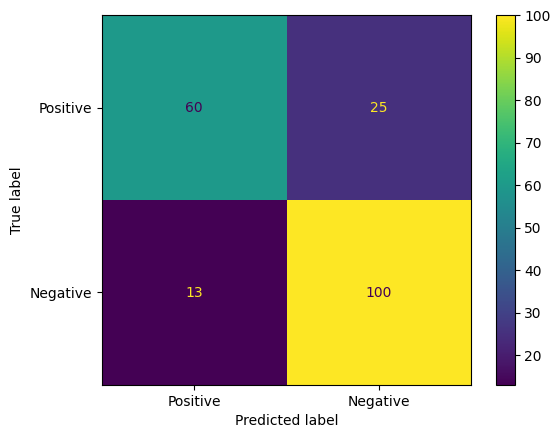1. 概要
この Codelab では、パラメータ エフィシエント チューニング(PET)を使用してカスタマイズされたテキスト分類器を作成する方法について説明します。PET 手法では、モデル全体をファインチューニングするのではなく、少量のパラメータのみを更新するため、比較的簡単に迅速にトレーニングできます。また、比較的少ないトレーニング データでモデルが新しい動作を学習しやすくなります。この手法について詳しくは、Towards Agile Text Classifiers for Everyone をご覧ください。この論文では、これらの手法をさまざまな安全性タスクに適用し、数百個のトレーニング例で最先端のパフォーマンスを達成する方法について説明しています。
この Codelab では、LoRA PET メソッドと、より高速で効率的に実行できる小さい Gemma モデル(gemma_instruct_2b_en)を使用します。この Colab では、データの取り込み、LLM 用のデータのフォーマット設定、LoRA 重みのトレーニング、結果の評価の手順について説明します。この Codelab では、YouTube と Reddit のコメントから構築された、ヘイトスピーチを検出するための一般公開データセットである ETHOS データセットをトレーニング データとして使用します。200 個のサンプル(データセットの 1/4)のみでトレーニングした場合、F1: 0.80、ROC-AUC: 0.78 を達成します。これは、現在 リーダーボードで報告されている SOTA をわずかに上回っています(執筆時点: 2024 年 2 月 15 日)。800 個のサンプルすべてでトレーニングすると、F1 スコアが 83.74、ROC-AUC スコアが 88.17 になります。gemma_instruct_7b_en などの大規模なモデルは通常、パフォーマンスは優れていますが、トレーニングと実行のコストも高くなります。
トリガー警告: この Codelab では、ヘイトスピーチを検出するための安全性分類システムを開発するため、例と結果の評価に不適切な表現が含まれています。
2. 設置とセットアップ
この Codelab では、最新バージョンの keras(3)、keras-nlp(0.8.0)、ベースモデルをダウンロードするための Kaggle アカウントが必要です。
!pip install -q -U keras-nlp
!pip install -q -U keras
Kaggle にログインするには、kaggle.json 認証情報ファイルを ~/.kaggle/kaggle.json に保存するか、Colab 環境で次のコマンドを実行します。
import kagglehub
kagglehub.login()
この Codelab は、Keras バックエンドとして Tensorflow を使用してテストされましたが、Tensorflow、Pytorch、JAX を使用できます。
import os
os.environ["KERAS_BACKEND"] = "tensorflow"
3. ETHOS データセットを読み込む
このセクションでは、分類子をトレーニングするデータセットを読み込み、トレーニング セットとテストセットに前処理します。ソーシャル メディアでのヘイトスピーチを検出するために収集された、一般的な研究データセット ETHOS を使用します。データセットの収集方法の詳細については、ETHOS: an Online Hate Speech Detection Dataset をご覧ください。
import pandas as pd
gh_root = 'https://raw.githubusercontent.com'
gh_repo = 'intelligence-csd-auth-gr/Ethos-Hate-Speech-Dataset'
gh_path = 'master/ethos/ethos_data/Ethos_Dataset_Binary.csv'
data_url = f'{gh_root}/{gh_repo}/{gh_path}'
df = pd.read_csv(data_url, delimiter=';')
df['hateful'] = (df['isHate'] >= df['isHate'].median()).astype(int)
# Shuffle the dataset.
df = df.sample(frac=1, random_state=32)
# Split into train and test.
df_train, df_test = df[:800], df[800:]
# Display a sample of the data.
df.head(5)[['hateful', 'comment']]
次のような出力が表示されます。
ラベル | コメント | |
0 |
|
|
1 |
|
|
2 |
|
|
3 |
|
|
4 |
|
|
4. モデルをダウンロードしてインスタンス化する
ドキュメントに記載されているように、Gemma モデルはさまざまな方法で簡単に使用できます。Keras では、次のことを行う必要があります。
import keras
import keras_nlp
# For reproducibility purposes.
keras.utils.set_random_seed(1234)
# Download the model from Kaggle using Keras.
model = keras_nlp.models.GemmaCausalLM.from_preset('gemma_instruct_2b_en')
# Set the sequence length to a small enough value to fit in memory in Colab.
model.preprocessor.sequence_length = 128
テキストを生成して、モデルが機能していることを確認できます。
model.generate('Question: what is the capital of France? ', max_length=32)
5. テキストの前処理とセパレーター トークン
モデルが意図をより深く理解できるようにするには、テキストを前処理して区切りトークンを使用します。これにより、モデルが想定される形式に適合しないテキストを生成する可能性が低くなります。たとえば、次のようなプロンプトを作成して、モデルに感情分類をリクエストできます。
Classify the following text into one of the following classes:[Positive,Negative] Text: you look very nice today Classification:
この場合、モデルが目的のものを出力する場合もあれば、出力しないこともあります。たとえば、テキストに改行文字が含まれていると、モデルのパフォーマンスに悪影響が及ぶ可能性があります。より堅牢な方法として、区切りトークンを使用する方法があります。プロンプトは次のようになります。
Classify the following text into one of the following classes:[Positive,Negative] <separator> Text: you look very nice today <separator> Prediction:
これは、テキストを前処理する関数を使用して抽象化できます。
def preprocess_text(
text: str,
labels: list[str],
instructions: str,
separator: str,
) -> str:
prompt = f'{instructions}:[{",".join(labels)}]'
return separator.join([prompt, f'Text:{text}', 'Prediction:'])
前と同じプロンプトとテキストを使用して関数を実行すると、同じ出力が表示されます。
text = 'you look very nice today'
prompt = preprocess_text(
text=text,
labels=['Positive', 'Negative'],
instructions='Classify the following text into one of the following classes',
separator='\n<separator>\n',
)
print(prompt)
出力は次のようになります。
Classify the following text into one of the following classes:[Positive,Negative] <separator> Text:well, looks like its time to have another child <separator> Prediction:
6. 出力ポスト処理
モデルの出力は、さまざまな確率のトークンです。通常、テキストを生成するには、最も確率の高い上位数個のトークンを選択し、文、段落、またはドキュメント全体を作成します。ただし、分類の目的では、Positive が Negative よりも確率が高いとモデルが判断するかどうか、またはその逆かどうかが重要になります。
前述でインスタンス化したモデルの出力を、次のトークンが Positive か Negative かの独立した確率に変換する方法は次のとおりです。
import numpy as np
def compute_output_probability(
model: keras_nlp.models.GemmaCausalLM,
prompt: str,
target_classes: list[str],
) -> dict[str, float]:
# Shorthands.
preprocessor = model.preprocessor
tokenizer = preprocessor.tokenizer
# NOTE: If a token is not found, it will be considered same as "<unk>".
token_unk = tokenizer.token_to_id('<unk>')
# Identify the token indices, which is the same as the ID for this tokenizer.
token_ids = [tokenizer.token_to_id(word) for word in target_classes]
# Throw an error if one of the classes maps to a token outside the vocabulary.
if any(token_id == token_unk for token_id in token_ids):
raise ValueError('One of the target classes is not in the vocabulary.')
# Preprocess the prompt in a single batch. This is done one sample at a time
# for illustration purposes, but it would be more efficient to batch prompts.
preprocessed = model.preprocessor.generate_preprocess([prompt])
# Identify output token offset.
padding_mask = preprocessed["padding_mask"]
token_offset = keras.ops.sum(padding_mask) - 1
# Score outputs, extract only the next token's logits.
vocab_logits = model.score(
token_ids=preprocessed["token_ids"],
padding_mask=padding_mask,
)[0][token_offset]
# Compute the relative probability of each of the requested tokens.
token_logits = [vocab_logits[ix] for ix in token_ids]
logits_tensor = keras.ops.convert_to_tensor(token_logits)
probabilities = keras.activations.softmax(logits_tensor)
return dict(zip(target_classes, probabilities.numpy()))
この関数をテストするには、前に作成したプロンプトを使用して実行します。
compute_output_probability(
model=model,
prompt=prompt,
target_classes=['Positive', 'Negative'],
)
出力は次のようになります。
{'Positive': 0.99994016, 'Negative': 5.984089e-05}
7. すべてを分類子としてラップする
使いやすくするために、作成したすべての関数を、predict() や predict_score() などの使いやすく、使い慣れた関数を使用して、単一の sklearn のような分類器にラップできます。
import dataclasses
@dataclasses.dataclass(frozen=True)
class AgileClassifier:
"""Agile classifier to be wrapped around a LLM."""
# The classes whose probability will be predicted.
labels: tuple[str, ...]
# Provide default instructions and control tokens, can be overridden by user.
instructions: str = 'Classify the following text into one of the following classes'
separator_token: str = '<separator>'
end_of_text_token: str = '<eos>'
def encode_for_prediction(self, x_text: str) -> str:
return preprocess_text(
text=x_text,
labels=self.labels,
instructions=self.instructions,
separator=self.separator_token,
)
def encode_for_training(self, x_text: str, y: int) -> str:
return ''.join([
self.encode_for_prediction(x_text),
self.labels[y],
self.end_of_text_token,
])
def predict_score(
self,
model: keras_nlp.models.GemmaCausalLM,
x_text: str,
) -> list[float]:
prompt = self.encode_for_prediction(x_text)
token_probabilities = compute_output_probability(
model=model,
prompt=prompt,
target_classes=self.labels,
)
return [token_probabilities[token] for token in self.labels]
def predict(
self,
model: keras_nlp.models.GemmaCausalLM,
x_eval: str,
) -> int:
return np.argmax(self.predict_score(model, x_eval))
agile_classifier = AgileClassifier(labels=('Positive', 'Negative'))
8. モデルのファインチューニング
LoRA は Low-Rank Adaptation の略です。これは、大規模言語モデルを効率的にファインチューニングするために使用できるファインチューニング手法です。詳しくは、LoRA: Low-Rank Adaptation of Large Language Models に関する記事をご覧ください。
Gemma の Keras 実装には、ファインチューニングに使用できる enable_lora() メソッドが用意されています。
# Enable LoRA for the model and set the LoRA rank to 4.
model.backbone.enable_lora(rank=4)
LoRA を有効にしたら、微調整プロセスを開始できます。Colab では、エポックあたり約 5 分かかります。
import tensorflow as tf
# Create dataset with preprocessed text + labels.
map_fn = lambda xy: agile_classifier.encode_for_training(*xy)
x_train = list(map(map_fn, df_train[['comment', 'hateful']].values))
ds_train = tf.data.Dataset.from_tensor_slices(x_train).batch(2)
# Compile the model using the Adam optimizer and appropriate loss function.
model.compile(
loss=keras.losses.SparseCategoricalCrossentropy(from_logits=True),
optimizer=keras.optimizers.Adam(learning_rate=0.0005),
weighted_metrics=[keras.metrics.SparseCategoricalAccuracy()],
)
# Begin training.
model.fit(ds_train, epochs=4)
エポック数を増やすと、オーバーフィッティングが発生するまで精度が向上します。
9. 結果を確認する
これで、トレーニングしたアジャイル分類システムの出力を検査できます。このコードは、テキストを指定すると、予測されたクラススコアを出力します。
text = 'you look really nice today'
scores = agile_classifier.predict_score(model, text)
dict(zip(agile_classifier.labels, scores))
{'Positive': 0.99899644, 'Negative': 0.0010035498}
10. モデルの評価
最後に、2 つの一般的な指標(F1 スコアと AUC-ROC)を使用してモデルのパフォーマンスを評価します。F1 スコアは、特定の分類しきい値で適合率と再現率の調和平均を評価することで、偽陰性と偽陽性の誤差を捉えます。一方、AUC-ROC は、さまざまなしきい値における真陽性率と偽陽性率のトレードオフを捉え、この曲線の下の面積を計算します。
from sklearn.metrics import f1_score, roc_auc_score
y_true = df_test['hateful'].values
# Compute the scores (aka probabilities) for each of the labels.
y_score = [agile_classifier.predict_score(model, x) for x in df_test['comment']]
# The label with highest score is considered the predicted class.
y_pred = np.argmax(y_score, axis=1)
# Extract the probability of a comment being considered hateful.
y_prob = [x[agile_classifier.labels.index('Negative')] for x in y_score]
# Compute F1 and AUC-ROC scores.
print(f'F1: {f1_score(y_true, y_pred):.2f}')
print(f'AUC-ROC: {roc_auc_score(y_true, y_prob):.2f}')
F1: 0.84 AUC-ROC: = 0.88
モデルの予測を評価する別の方法として、混同行列があります。混同行列は、さまざまな種類の予測エラーを視覚的に示します。
from sklearn.metrics import confusion_matrix, ConfusionMatrixDisplay
cm = confusion_matrix(y_true, y_pred)
ConfusionMatrixDisplay(
confusion_matrix=cm,
display_labels=agile_classifier.labels,
).plot()

また、ROC 曲線を確認して、さまざまなスコアリングしきい値を使用した場合の予測エラーの可能性を把握することもできます。
from sklearn.metrics import RocCurveDisplay, roc_curve
fpr, tpr, _ = roc_curve(y_true, y_prob, pos_label=1)
RocCurveDisplay(fpr=fpr, tpr=tpr).plot()


